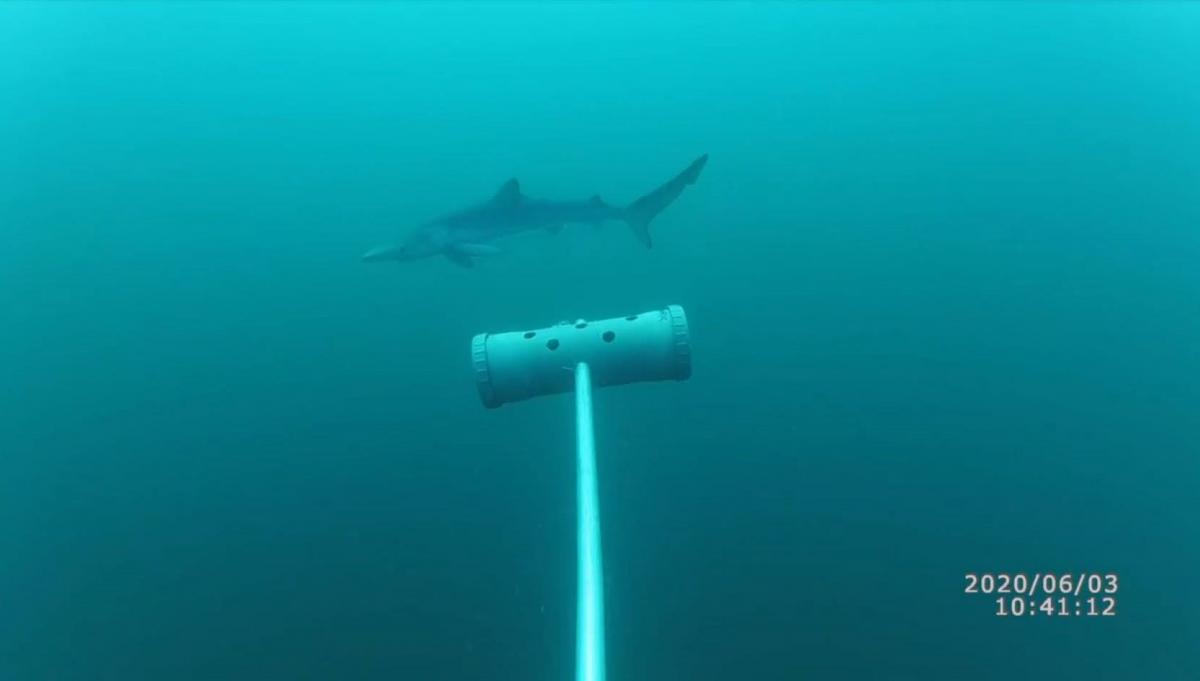Sharks, Rays and Humans - Potential conflicts in the Berlengas Natural Reserve
A pioneering study carried out in the Berlengas Natural Reserve (RNB) by a team of marine biologists, including MARE researchers Marisa Batista, Miguel Pais, Sofia Henriques and Catarina Abril, was recently published in the scientific journal Frontiers in Marine Science. This study was carried out as part of the project "FindRayShark - Application of Innovative Technologies in the Conservation of Rays and Sharks", financed by the Oceanário de Lisboa's Ocean Conservation Fund and the Oceano Azul Foundation.
The study generated maps of shark and ray distribution and the intensity of human activities, combining them to identify areas of greater overlap, using a spatial conflict risk index developed for this study. To do this, they started by collecting knowledge from fishermen and the local population through surveys, which was then complemented with various non-invasive methodologies, including video cameras with bait, data from scientific observers on board, sightings shared on social networks and citizen science platforms (e.g. Biodiversity4All).
Sharks and rays grow slowly, have a long lifespan and produce few offspring, characteristics that can make some of the species more vulnerable to impacts resulting from human activities. Portugal is home to more than 70 species of sharks and 40 species of rays, almost half of which are considered endangered by the International Union for Conservation of Nature (IUCN). Portugal ranks third in Europe for the number of rays and sharks landed at fish auctions, is the second largest exporter of shark meat and the sixth largest importer of ray meat in the world. In the case of species that are in decline, conservation measures are needed, based on scientific information about their distribution, abundance and life cycle. To this end, it is essential to develop monitoring programs to study their biology and identify the most important areas for their reproduction, growth and feeding (priority areas for their conservation).
Miguel Pais, a researcher at MARE and one of the coordinators of the study, stressed that "the work carried out is relevant, not only because of the results obtained, but above all because it demonstrates that it is possible to generate significant basic information for the management of Marine Protected Areas, in a relatively short period of time, based on the local knowledge of those who have lived by the sea for many years". According to Marisa Batista, first author of the article and also a MARE researcher during this project, "the collaboration between all parties was crucial, namely the valuable help of local fishermen and maritime-tourism companies, not only with information on the historical and current occurrence of the species, but also with practical knowledge that made our work with the baited cameras much easier, in a sea they know much better than we do."
The authors also highlighted the partnership with the JustDive diving center in Peniche, who "were the project's logistical partners, always willing to take us out to sea at any time of the day or night, for several hours of hard work, storing and transporting material, always in an atmosphere of companionship and sharing knowledge about the seabed in that area." Finally, they stressed the importance of the collaboration with the Portuguese Society for the Study of Birds(SPEA), which provided the data from observers on board fishing boats obtained as part of its conservation projects in the RNB, "without which this study would not have been possible".
To access the article, click HERE


A MARE researcher prepares the bait for a camera that will be dropped off the coast of Farilhões (right). Photogram of a baited camera, which recorded the passage of a blue shark - Prionace glauca (left).
